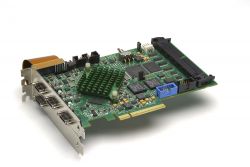Warrior Web Closer to Making Its Performance-Improving Suit a Reality
Entering its final phase, program seeks proposals that would help combine promising technologies into a comfortable, lightweight undersuit that would help prevent injury and boost endurance
Of the many risks dismounted Soldiers face in the field, one of the most common is injury from carrying their gear-often topping 100 pounds-for extended periods over rough terrain. Heavy loads increase the likelihood of musculoskeletal injury and also exacerbate fatigue, which contributes to both acute and chronic injury and impedes Soldiers' physical and cognitive abilities to perform mission-oriented tasks. To help address these challenges, DARPA seeks performers for the last phase of its Warrior Web program.
Warrior Web aims to develop a soft, lightweight undersuit that would help reduce injuries and fatigue and improve Soldiers' ability to efficiently perform their missions. The garment would protect injury-prone areas and promote efficient and safe movement over a wide range of activities (walking, running, jumping, crawling, etc.). Comfortable, durable and washable, the garment would not interfere with body armor or other standard clothing and gear. DARPA seeks to create a working prototype that significantly boosts endurance, carrying capacity and overall Soldier effectiveness-all while using no more than 100 watts of power.
"Many of the individual technologies currently under development show real promise to reduce injury and fatigue and improve endurance," said LTC Joseph Hitt, DARPA program manager for Warrior Web. "Now we're aiming to combine them-and hopefully some new ones, too-into a single system that nearly every Soldier could wear and would provide decisive benefits under real-world conditions."
The program's successes to date have resulted from development efforts funded under Warrior Web Task A: Warrior Web Alpha. These efforts have focused on developing a mix of core component technologies worn at the ankles, hips, knees and upper body. Task A performers have been exploring ways to directly mitigate factors that cause injury, as well as reduce physical burdens by augmenting the work done by Soldiers' own muscles. Component systems within Task A include methods for rapid joint stabilization, functional structures, energy injection, regenerative kinetics, load transfer and distribution, and flexible kinetic and kinematic sensing.
The program's next phase, Warrior Web Task B: Advanced Technology Development, aims to leverage Task A component technology investments and further advance the development of a fully integrated undersuit system. DARPA now seeks ideas and technical proposals for how to best develop and implement the Warrior Web system.
DARPA has scheduled a Warrior Web Task B Proposers' Day for potential performers on Thursday, Sept. 5, 2013. The Special Notice for the Proposers' Day is available at http://go.usa.gov/jJjT and more information is available here. The Broad Agency Announcement (BAA) for Warrior Web Task B is available at http://go.usa.gov/jJbR.
DARPA seeks proposals in the following technology areas:
*Integrated advanced control systems across multiple joints
*Materials, fabrics, structures, sensors, sensor interfaces and human factors associated with developing conforming, assistive wearable technologies
*Technologies that significantly reduce the potential for acute or chronic injury of a wearer under typical warfighter mission profile situations
*Technologies that increase physical capabilities and/or endurance of humans during activities such as running, lifting, climbing, carrying a load, marksmanship, etc.
*Additional assistive wearable technologies for rehabilitation, physical therapy or those intended to help improve quality of life for the aging population
Proposers may submit a point solution technology that addresses a single technology area or an integrated technology solution or suit that addresses multiple areas. Proposals are due at 4 p.m. EDT on Thursday, October 3, 2013.
Featured Product

